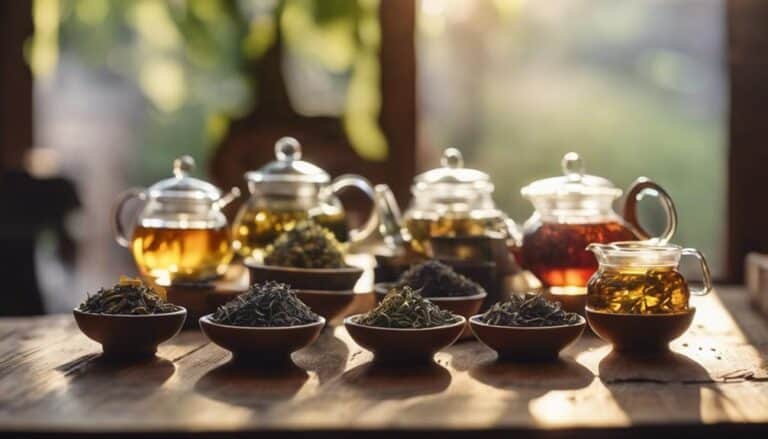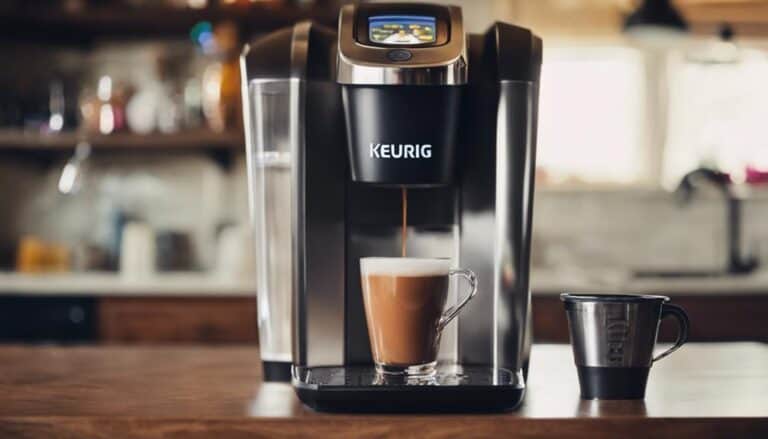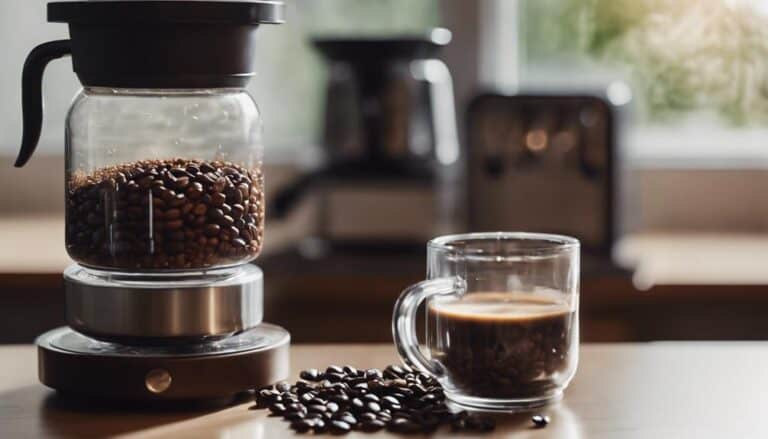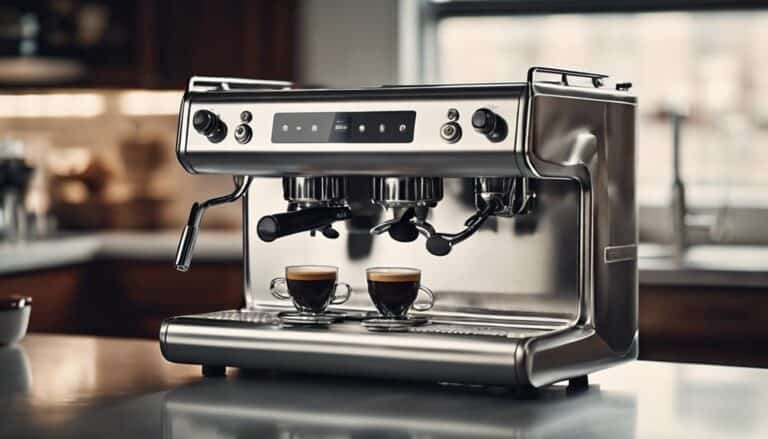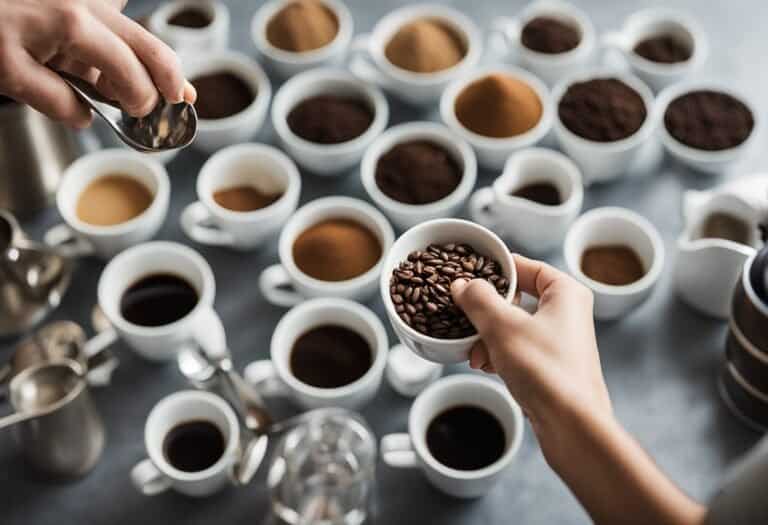American Coffee Water to Coffee Ratio
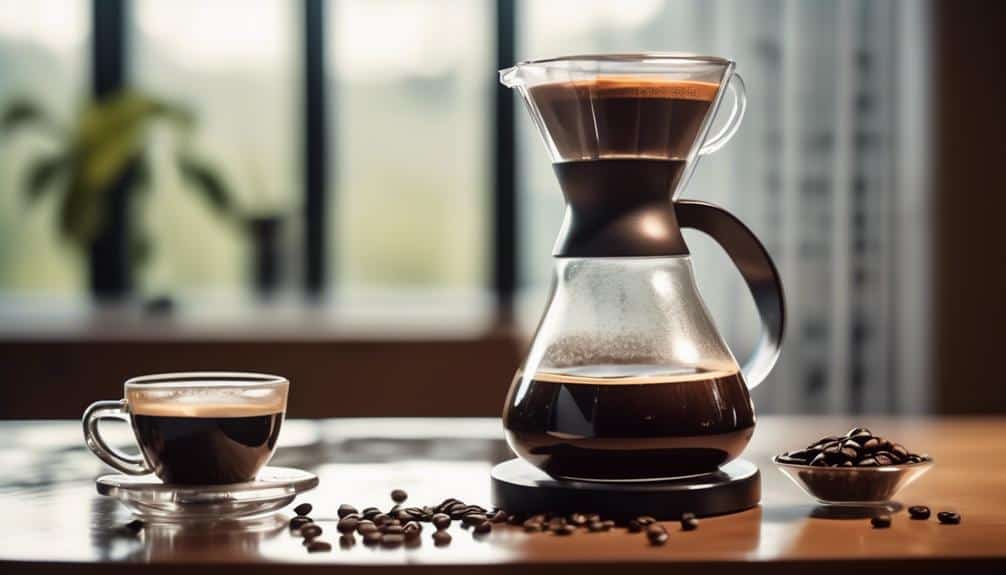
As we navigate the nuanced landscape of American coffee brewing, one question looms large: what is the ideal water to coffee ratio that unlocks the quintessential cup of joe?
We’ve all experienced mornings where the balance between water and coffee beans was either a miss or a hit, setting the tone for the day. While the standard 1:17 ratio offers a harmonious baseline, it’s not uncommon for coffee aficionados to tweak these measurements to satisfy their personal palate.
We understand that precision is paramount, and even the slightest deviation can transform the character of the brew. Join us as we explore the factors that influence this delicate equilibrium, from bean origin to grind size, and how we might adjust our methods to craft the perfect American coffee experience.
Key Takeaways
- The coffee-to-water ratio is important for flavor consistency and strength.
- Measuring water accurately using a kitchen scale is preferred for precision.
- The ideal coffee-to-water ratio for American coffee is often 1:17.
- Factors like grind size, brew time, and brewing method can affect the ratio and may require adjustments.
Understanding Brew Ratios
To brew a perfect cup of coffee, we must first grasp the significance of the coffee-to-water ratio, which is the cornerstone of flavor consistency and strength. We understand that this ratio, typically expressed as 1 to x, with 1 gram of coffee to x grams of water, is crucial for scalability and maintaining the taste we cherish.
Measuring water accurately using a cup or pot is essential to nailing that correct ratio and honing our brewing technique.
We rely on weight measurements for precision, as they trump using tablespoons, and a kitchen scale is our best tool for achieving the desired coffee strength and consistency. It’s all about control, and personal preference does play a part. We’re not afraid to tweak the coffee amount to hit that sweet spot of strength that’s just right for us. But remember, it’s important to check our measurements when we switch coffees.
The beauty of using metric measurements lies in its precision, consistency, and the way it simplifies the brewing process. We aim for optimal results, and an ideal ratio is our secret weapon. We’re after that perfect brew, and mastering the coffee to water ratio is our first step to success.
Ideal American Coffee Ratio
When aiming for the quintessential American cup of coffee, we often adopt a 1:17 coffee-to-water ratio to strike a perfect balance in flavor and strength. This ‘golden ratio’ has become a benchmark for many coffee aficionados. We understand that precision is key, and that’s why we rely on a gram scale to ensure we’re hitting the right marks every time. After all, consistency is the secret to a reliably delicious brew.
To bring the ideal American coffee experience to life, consider these vivid details:
- A pristine glass carafe, filled with exactly 340 grams of water, gently heated to the perfect temperature.
- The aroma of freshly ground coffee beans, with 20 grams poised for brewing.
- The satisfying pour, where water meets coffee, creates an amber stream that promises a robust yet balanced cup.
We have the power to tailor our coffee to our tastes by slightly tweaking the water-to-coffee ratio. It’s about finding your personal ‘golden ratio,’ where each sip is exactly as you like it. And with every precise measurement, we turn grams of water and coffee into moments of pure enjoyment.
Measuring Your Ingredients

Accurate measurements are the cornerstone of replicating that ideal coffee flavor, with a standard cup size in the US typically being 8 ounces of water to complement a precise amount of coffee. To ensure we’re on point every time, we rely on a kitchen scale to measure out our grams of coffee, providing us with the precision we seek. We know every bean counts, so we use the scale and tare function to account for the weight of our container, ensuring we’re only measuring what we need.
We certainly don’t leave the water to chance either. A measuring cup allows us to hit that 8-ounce mark consistently. And while the recommended ratios are a solid starting point, we’re not afraid to tweak the grams of coffee slightly to suit our personal tastes. After all, coffee is a personal affair.
Here’s a quick reference table to guide us:
| Volume of Water (oz) | Grams of Coffee | Coffee-to-Water Ratio |
|---|---|---|
| 8 | 14-16 | 1:16-1:18 |
| 16 | 28-32 | 1:16-1:18 |
| 24 | 42-48 | 1:16-1:18 |
With these measurements, we’re in complete control of our coffee routine, ensuring a perfect cup every time.
Factors Affecting the Ratio
Understanding that cup sizes can vary significantly, we must consider how this impacts the water to coffee ratio in our brewing process. We can’t just wing it and hope for the best—precision is key. To ensure our coffee is consistently delicious, we need to be mindful of several factors that can affect the ratio:
- Grind size: A finer grind will extract flavors more quickly, potentially leading to a stronger brew. We might need to tweak the ratio to balance the taste.
- Brew time: The longer our coffee brews, the more flavors are extracted. If we extend the brew time, we may want to adjust the water to coffee ratio to prevent over-extraction.
- Immersion brewing: Techniques like French press or cold brew involve steeping coffee grounds in water. With immersion brewing, the ratio guides the strength and can dramatically influence the end result.
We’re aiming for control to achieve that perfect cup. This means taking charge of the brewing process and adjusting the water to coffee ratio based on our grind size, brew time, and brewing method. It’s about finding what works for us and sticking to it for a consistent and satisfying coffee experience.
Perfecting Your Brew Technique

To perfect our brew technique, we’ll start by mastering the precise measurement of water and coffee, tailoring it to our unique taste preferences. We’ll use a brewing scale to ensure we’re hitting the ideal ratio of coffee to water every time. This means understanding not just cup sizes, but the gradations on our pot and the weight of our coffee grounds.
Accurate measurements aren’t just pedantic—they’re essential. We’ll use a measuring cup for water, paying close attention to those gradations. And for the coffee grounds, we won’t settle for scoops or tablespoons; a brewing scale will be our best friend. By weighing the coffee, we guarantee the precision that our taste buds demand.
Conclusion
In conclusion, we’ve explored the classic 1:17 coffee-to-water ratio that’s key to a great American brew. By accurately measuring our ingredients and adjusting the ratio to suit our tastes, we can enhance our coffee experience.
Remember, factors like grind size and brewing technique also play a role. Let’s keep experimenting and refining our methods until we perfect our own signature cup.
Coffee brewing is an art, and we’re all artists in our kitchens.
